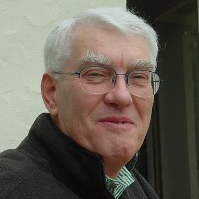Advanced Materials for Electrochemical Energy Storage: Lithium-Ion, Lithium-Sulfur, Lithium-Air and Sodium Batteries
A special issue of International Journal of Molecular Sciences (ISSN 1422-0067). This special issue belongs to the section "Physical Chemistry and Chemical Physics".
Deadline for manuscript submissions: closed (30 September 2022) | Viewed by 15643
Special Issue Editor
Interests: energy storage; solid-state ionics; lithium batteries; thin films
Special Issues, Collections and Topics in MDPI journals
Special Issue Information
Dear Colleagues,
Nowadays rechargeable batteries are one type of the most important and efficient energy storage devices. High-performance battery technology is considered as key enabling factor for deep decarbonization via large-scale application in electric vehicles and stationary storage. Materials (e.g., cathode and anode active materials, electrolyte, separators) are essential and performance-determining components for rechargeable batteries, such as lithium-ion, lithium-sulfur, lithium-air and sodium-ion batteries.
In these batteries, not only cathode and anode materials but also other components such as electrolyte, additive, and separators play crucial roles in determining the energy density, life-time, power capability, safety and cost. Special attentions have been devoted to the design and synthesis of materials to achieve a stable electrochemical performance by introducing the various functions, which are derived from their special morphology and architecture, proper particle dimension, surface engineering, bulk doping and composite formation and so forth. Therefore, the extensive study on the battery materials is playing an increasingly important role in producing advanced rechargeable batteries for the sustainable development of the future.
This special issue on “Advanced Materials for Electrochemical Energy Storage: Lithium-Ion, Lithium-Sulfur, Lithium-Air and Sodium Batteries” seeks high-quality works focusing on the lastest advances in the development of various materials for rechargeable batteries.
Prof. Dr. Christian Julien
Guest Editor
Manuscript Submission Information
Manuscripts should be submitted online at www.mdpi.com by registering and logging in to this website. Once you are registered, click here to go to the submission form. Manuscripts can be submitted until the deadline. All submissions that pass pre-check are peer-reviewed. Accepted papers will be published continuously in the journal (as soon as accepted) and will be listed together on the special issue website. Research articles, review articles as well as short communications are invited. For planned papers, a title and short abstract (about 100 words) can be sent to the Editorial Office for announcement on this website.
Submitted manuscripts should not have been published previously, nor be under consideration for publication elsewhere (except conference proceedings papers). All manuscripts are thoroughly refereed through a single-blind peer-review process. A guide for authors and other relevant information for submission of manuscripts is available on the Instructions for Authors page. International Journal of Molecular Sciences is an international peer-reviewed open access semimonthly journal published by MDPI.
Please visit the Instructions for Authors page before submitting a manuscript. There is an Article Processing Charge (APC) for publication in this open access journal. For details about the APC please see here. Submitted papers should be well formatted and use good English. Authors may use MDPI's English editing service prior to publication or during author revisions.
Keywords
- rechargeable batteries
- lithium-ion
- lithium-sulfur
- lithium-air
- sodium-ion
- cathode
- anode
- electrolyte
- additive
- separator






